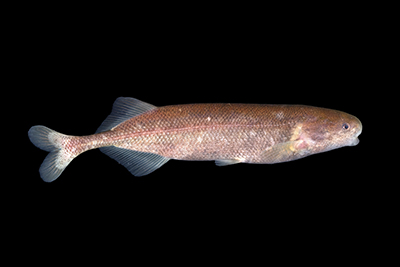Betting on tailless sperm that evolved from brave swimmers to hapless floaters seems like a crazy evolutionary gamble, but a group of fish seems to have done just that. Understanding that tradeoff holds promise to shed light on human disease and shake up biology lessons on traditional gender roles.
Michigan State University integrative biologist Jason Gallant and colleagues are using nearly $1 million from the National Science Foundation to understand the implications from a small African fish which evolved to have sperm with no tails but an electric-powered mating call.
“We want to know why electric fish get away with it when no other vertebrate can,” said Gallant, associate professor in the Department of Integrative Biology in the MSU College of Natural Science and a member of MSU’s Ecology, Evolution, and Behavior Program. “A general notion in biology is that sperm are cheap, and eggs are expensive – but these fish may be telling us that sperm are more expensive than we might think. They could be saving energy by cutting back on sperm tails.”
The variety of fish called mormyroids are commonly called elephantfish because even though small, their elongated mouths look a bit like a trunk. They live in murky African waters so dense they rely on brief electric charges to find each other. The pulses of electrical output and the brainpower needed to pick analyze these pulses requires a lot of energy. Elephantfish may have prioritized spending their energy stores to finding females and then on relying on other ways to deliver sperm to egg.
And within that theory are so many questions.
Members of the MSU Electric Fish Lab will work to confirm the gene they believe turns off sperm tail development. One way they test that is to isolate the gene and insert it in another species of fish with traditionally wiggly sperm to see if those tails disappear. The researchers also have developed a way to measure respiration to determine how much energy the fish save by nixing sperm tails.
And the group believes the questions go beyond fish sperm. Flagella are abundant throughout our tree of life — including in the sperm of people. Flagella are related to another beating appendage called cilia, which are shorter hair-like structures that also move.
“It’s interesting that cilia make biological world go round: flagella are really just really long cilia and many of the same parts,” Gallant said.
And this is where both human health and gender norms enter the picture.
A human genetic disorder called primary ciliary dyskinesia, or PCD, brings chronic respiratory infection, abnormally positioned organs, fluid on the brain and infertility, all stemming from the lack of normally functioning cilia and flagella. The gene Gallant’s team is focusing on appears to be one of several factors in PCD, yet he notes its intriguing the mormyroids seem well and normal except for the tailless sperm. A better understanding of the function of the gene in fish could provide another piece of the PCD puzzle to understand human health problems.
And since fish that procreate with sperm that don’t swim is perplexing, the researchers are exploring how Elephantfish are far from traditionalists. A part of the research project will engage undergraduates to explore one of biology’s less-known stories.
“What’s neat about this grant is that we’re working with biology that turns our assumptions on their head,” Gallant said. “As humans we have assumptions that males are programmed to be the fertilizer. Females are passive recipients of sperm. But these sperm can’t even swim — they also have small testes, so aren’t competitive with other males.
“My pet hypothesis is that a lot of people get their ideas of how men and women should behave from biology lessons,” Gallant added. “If we teach them how diverse nature is, will that change the way they go about acting with each other?”
This story was originally published by the College of Natural Science.


